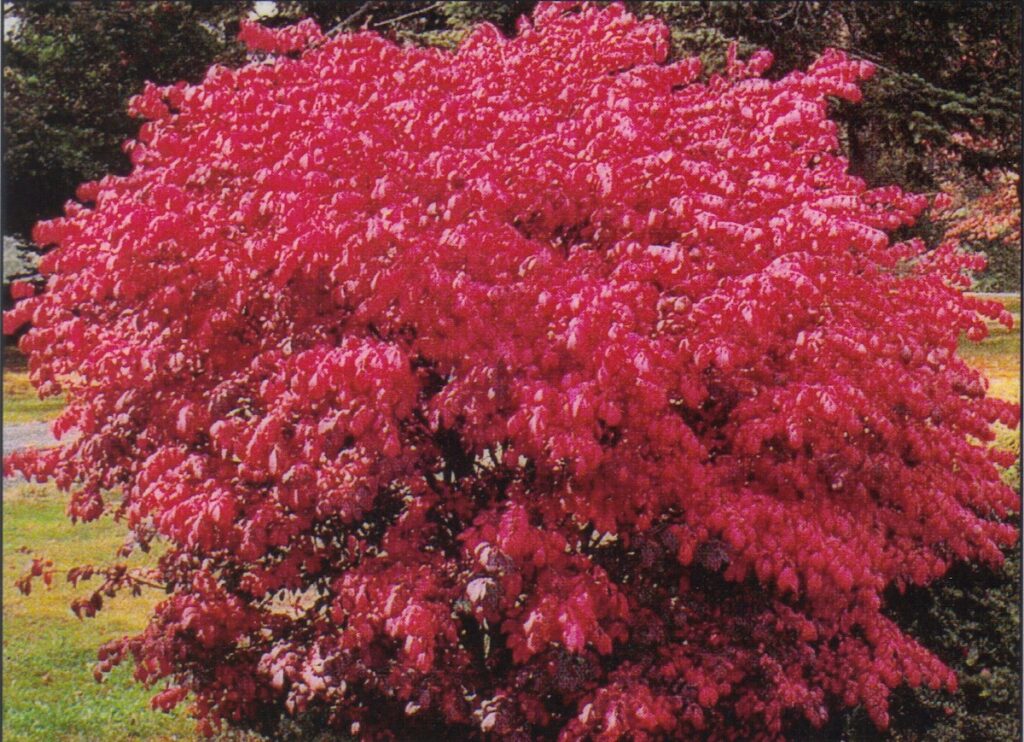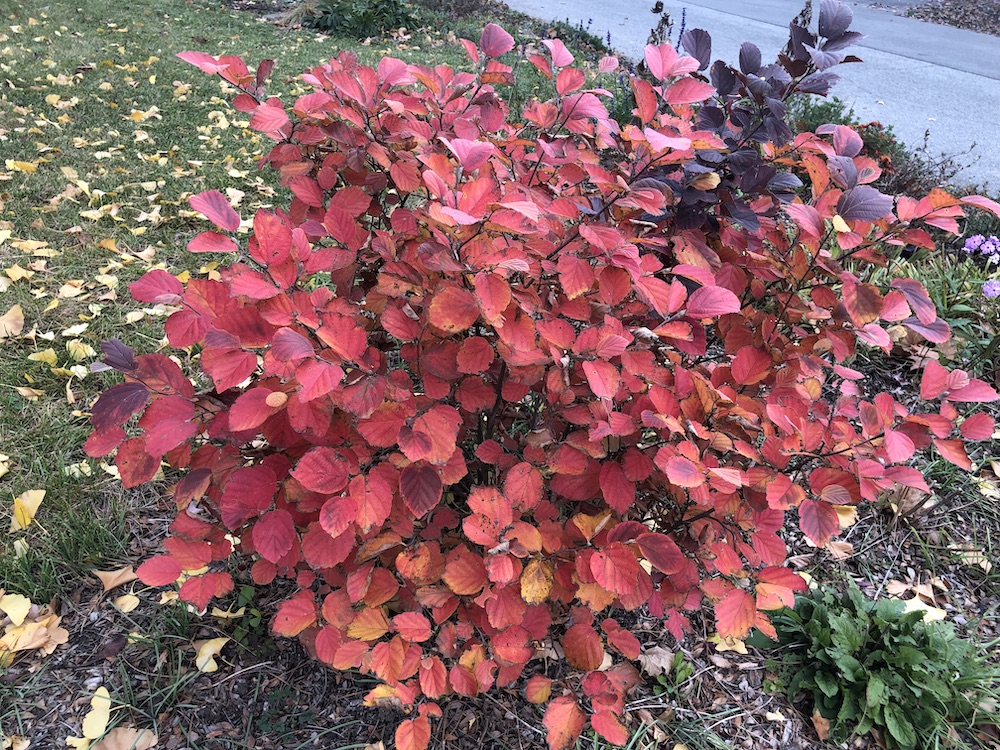
Probably one of the most popular shrubs for the Indiana landscape, I planted a burning bush at the corner of my lot 30 years ago. It had tiny white flowers in spring that formed into orange-red berries. Paired with the deep red leaves, burning bush was a winner in the landscape. Mine has been long gone.
Burning bush (Euonymus alata) has escaped our gardens and spread to many natural areas. The little orange-red berries fall to the ground to become new plants. Or the birds take the seeds, drop them in natural areas, where they take root. Nature groups have many photos of burning bush (photo above) clogging Indiana’s natural areas.
State environmentalists want to put this plant on Indiana’s banned invasive plant species list. It almost made the 2019 banned list, but growers were granted a reprieve because of how many they had in stock. The same for ornamental pear (Pyrus calleryana), which is trying to invade the world.
The reason most people like burning bush is its fall color. They are reluctant to pull it out because they don’t know what shrub could replace it. Burning bush comes from Asia, but we have two native species, one with with the adorable common name of hearts-a-burstin’.
Besides hearts-a-burstin’, American euonymous (E. americanus) also is known as the strawberry bush. Eastern wahoo (E. atropurpureus) is another native.
Each of these euonymous is a lovely, shade tolerant shrub, but may be a bit rangy in some landscapes.

Alternates to burning bush for fall color
Ninebark (Physocarpus spp.) has white or pink flowers in early summer and red leaves in fall. There are several native cultivars and different forms on the market, so select for size, leaf color and light requirements. No pruning is necessary if planted to accommodate the mature size. Good for full to part sun.
Fothergilla (photo above) is another native shrub with multi seasonal interest. It has white bottle brush flowers in spring, blueish-green leaves in summer and beautiful, long-lasting reddish orange leaves in fall. Dwarf fothergilla (F. gardenii) is about 3 feet tall and 4 feet wide. ‘Mount Airy’ is slightly larger and suckers. Native. Good for full sun to part shade.
Just about any Viburnum has good fall color, including V. x burkwoodii, V. x juddii and V. nudem and V. dentatum. The last two are native.
Also Diervilla with top notch fall leaf color makes a great small shrub that’s good for adding structure to a flower bed. Proven Winners’ Kodiak series of native diervilla is worth planting in a sunny to shady areas.